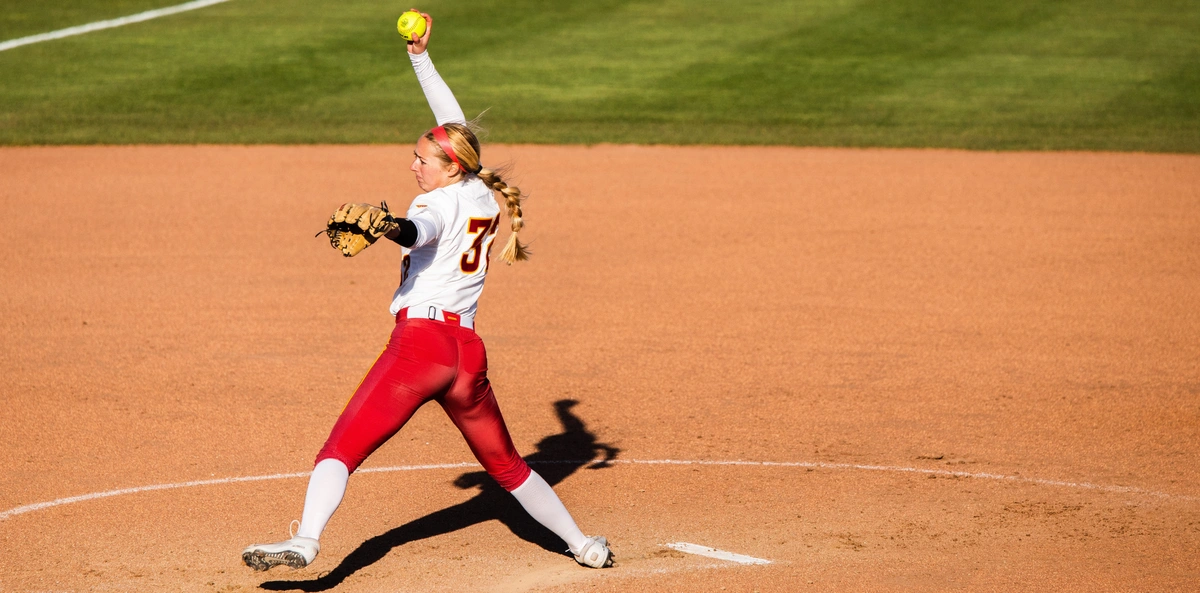Flashback 15 years ago, where you’re standing in the box with an 0-2 count.
Despite knowing what’s coming, you’re STILL fooled by this pitch that has taken the fastpitch softball world by storm.
At this point, fastptich softball was still thought of as the girl's version of baseball, yet when the riseball came into the game of softball, it took over and demanded the respect of batters, coaches, and fans.
Simply put, it changed the game.
What Is a Riseball?
So, what makes it so special?
A riseball is a pitch that breaks up in the zone (often out of it altogether) with a tight spin difficult to identify by batters. The pitcher’s goal is to maintain the traditional 4-seam rotation of a fastball, but add a backspin to create the late upward break.
It’s important to note that it is NOT just a high fastball, but one that is considered to “defy gravity” and cross home plate on an upwards trajectory.
Where Did The Riseball Come From?
While there’s no clear originator of the riseball, it was likely created just like every other pitch - a kid messing around with different spins.
However, it grew in popularity by professional softball players like Jennie Finch, Cat Osterman and Monica Abbott. Jennie Finch is famously shown striking out MLB All-Star and future hall of fame hitter, Albert Pujols on her riseball.
What Makes a Riseball a Good Pitch?
Unlike most other pitches in softball, a quality riseball is difficult to pick out.
While standing in the box, the riseball looks like any other 4-seam fastball. It starts out heading for the middle of your hitting zone, which causes you to start your swing, but at the last minute, the ball ‘jumps’ above the point where you thought the ball was going to hit your bat.
In today’s game, you’ll find younger pitchers utilizing the riseball as a “waste pitch.” Pitchers who are still developing their tight spin and arm swing will use this when they’re ahead in the count to change the batters’ eye level in the box.
How Do You Throw a Riseball?
The riseball is argued by many pitchers and coaches alike as the hardest pitch to learn. Because of the complexities, it is a pitch that should be learned under the guidance of a trained pitching coach to maintain proper form and prevent injury.
Like all pitches, there are few key components unique to the riseball. These include:
The Grip - Find a “C” on the seams of the softball. Place your pointer finger just under the top part of the “C” and the middle finger along the bottom seam.
The Pitch - The goal is to imagine scraping your knuckles against the ground and lead with your pinky towards home plate.
The Release - It’s important this remains the same as every other pitch so you’re not giving it away. Focus on a powerful wrist snap to create the tightest possible spin. In your finish, the back of your hand should be towards the catcher.
Pitchers who have perfected the riseball to a nearly unhittable pitch have found that the secret lies in mastering your grip and spin in every phase of your warm-up.
How Do You Hit a Riseball?
You don’t! Because the ball breaks up and is out of the zone, for most pitchers, this is only going to be a strike if a batter chases it.
Remember, that the secret behind a riseballs success is how closely it resembles a traditional fastball, so you’re going to have to use differences in her motion and release to see it coming.
In my experience, I found two areas to help in identification:
Hand - If you see the back of her hand with her thumb up, this is your best indicator that riseball is coming. Unlike looking at her body, your eyes can stay focused on her release point.
Body Motion - If her body tilts back or your pitcher appears to “pull up” after release, this is a good indicator that a riseball is headed your way.
When Should a Pitcher Learn a Riseball?
In today’s game, I see far too many pitchers trying to add specialty pitches far too soon. The riseball is no different.
While it can be a great tool in your tool belt, there are a few milestones pitching coaches prefer their players to hit first. These include:
Consistent Fastball Spin - The best part about a riseball is how closely it resembles a fastball, so if you don’t have a consistent fastball spin, your riseball won’t be as effective.
Consistent Fastball Placement - As a pitcher, location matters. If you can master the placement of your fastball, you’ll have much better execution and placement of your movement pitches. Not to mention, consistency with your fastball can set up your riseball as a great knockout pitch when you’re ahead in the count.
An Effective Offspeed - Fastballs and riseballs differ little in speed, so it’s common to find coaches asking pitchers to have an effective offspeed before learning a movement pitch. This keeps hitters off balance as it forces them to not only adjust to location but to speed as well.
Again, as mentioned earlier, it’s important you consult a pitching coach before you incorporate a riseball. They can help you fine-tune mechanics and turn this into a truly dangerous pitch.


